Japan, a vastly modernised country, which intertwines ancient traditions effortlessly throughout present day life.
Just as Japan likes its food to be perfectly balanced in flavour, you will notice how the country’s traditional cultures fuse with modern day living in its own perfect balance of harmony.
Before travelling to this timeless country, I’ve collated for you with the essential tips/recommendations to help you get in the know before you go!
Things to do
Japan is known for its rich culture, bubbling hot springs and tasty food; but did you also know that Japan is an archipelago (extensive group of islands) made from highly volcanic activity. This means that Japan is home to some of the most euphoric scenic places and those hot springs are just the icing on the top of what Mother Nature gave to this beautiful country.
It will take more than a few weeks to cover everything that is possible to see and do. However, here are a few exciting things you might like to tick off your Japan bucket list.
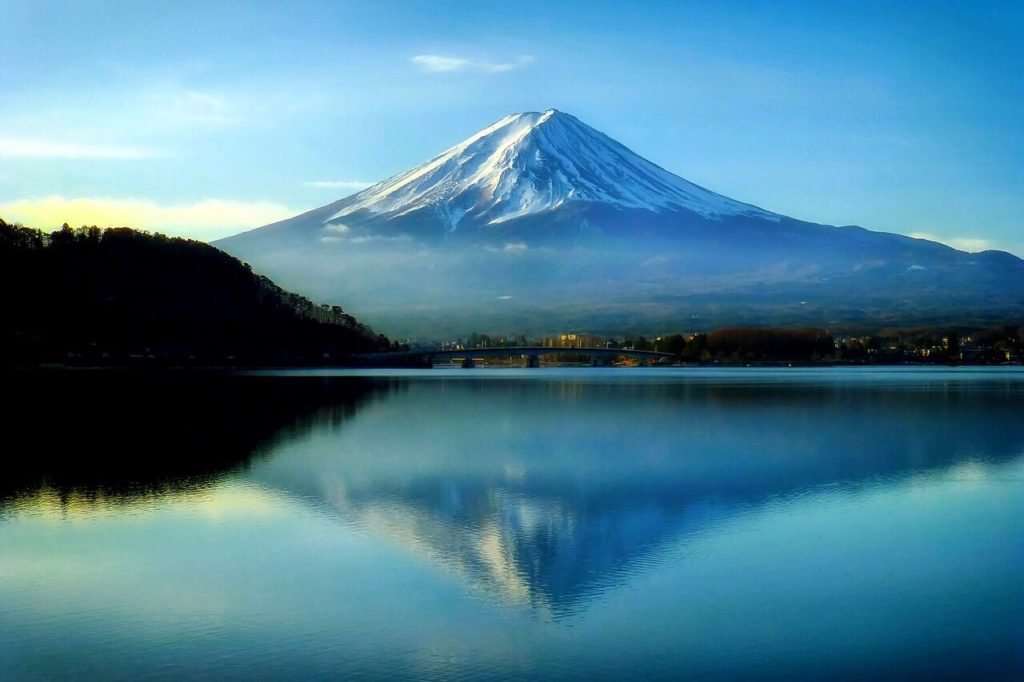
The Landscape– Japan is a country with beauty across each destination you visit.
One of the most iconic symbols would of course be, Mount Fuji. Japan’s highest mountain/volcano (dormant since 1707). Found southwest of Tokyo, between the borders of Yamanashi & Shizuoka. It is the major feature of Fuji-Hakone-Izu National Park and considered a sacred symbol, with thousands of people climbing to the shrine located at its peak! Climbing season is from Early July to late August, and it’s best to set out at night so you reach the top by dawn for that serene sunrise.
One adventure, which will no doubt take you on your own journey of self discovery, would be Kumano Kodo (famous series of pilgrimage routes). The sacred trails explore the three grand shrines; Kumano Hongū Taisha, Kumano Nachi Taisha and Kumano Hayatama Taisha.
Every town/city you venture to has its own remarkable landscapes to explore. I would say one of the best things you can do is venture out, and indulge yourself in the spectacular works of art Japan/Mother Nature has to offer!
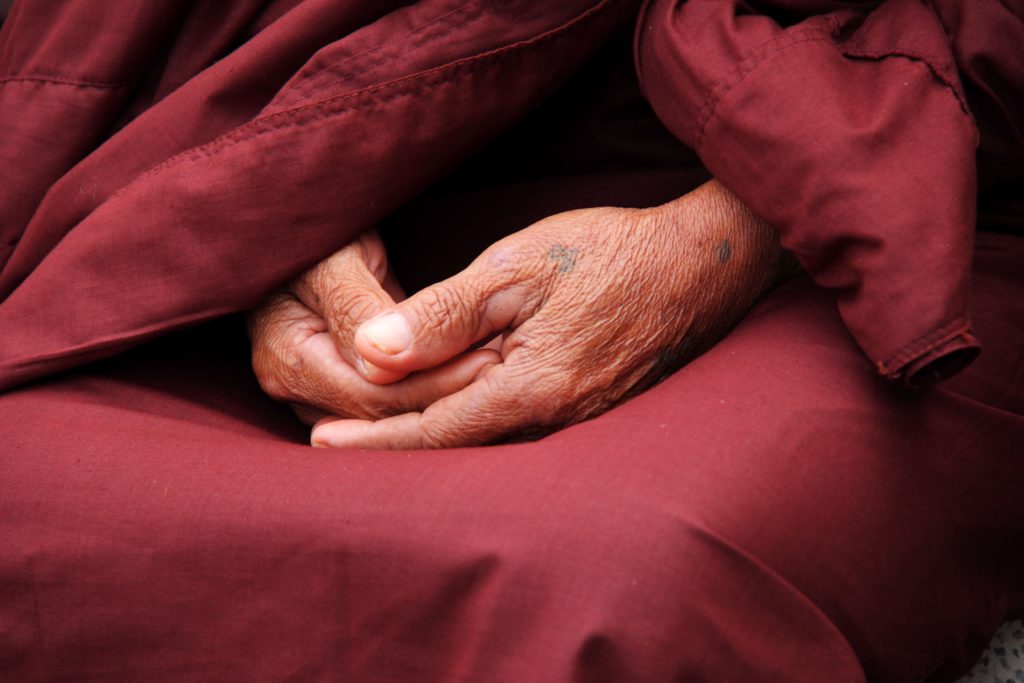
Spirituality & Religion – Japan has two major religions, Shinto & Buddhism.
Shinto, is Japan’s oldest and most treasured religion. It is the basis of their spirituality. This indigenous religion speaks about living in harmony with nature and living creatures.
Buddhism, is a religion in which came to Japan in the 6th century and has co-existed with Shinto due to the cross over in both beliefs.
When exploring Japan, make sure you take the time to visit sacred temples, zen rock gardens, onsens and ceremonies/festivals which honour the foundation of Japan’s culture.
These will no doubt, instil the ways of Japanese spiritually in anyone.
Zen rock gardens – These beautiful gardens consist of dry landscapes, often featuring arrangements of rocks, water features, moss, trees, bushes and raked gravel or sand to represent ripples in the water. A very “zen” place to take some time to relax.
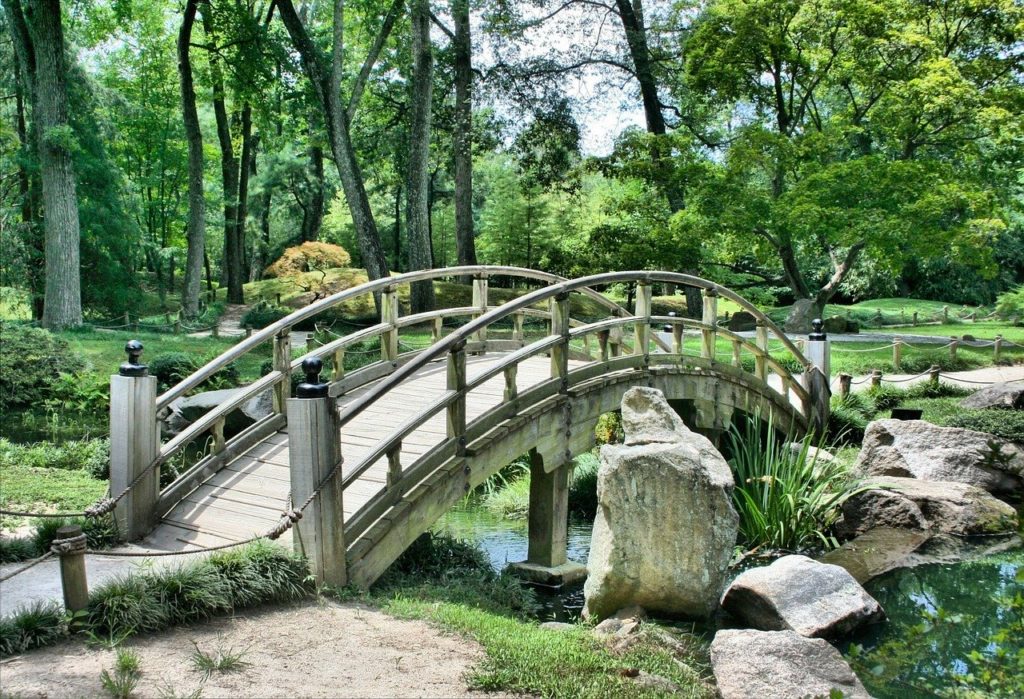
Onsen (Hot Springs) – Japan has thousands of onsens throughout the country. It is distinctively Japanese and you should certainly use these to experience something next level, as it really does de-stress and relax you!
The three most famous onsens in Japan are Kusatsu Onsen, Arima Onsen & Gero Onsen.
There are separate onsens for male and female bathers but be warned, you will have to enjoy the experience completely naked.
Due to the “nakedness”, unfortunately if you have any tattoos which are visible on your body, you may find that you are not allowed to enter the public onsens, for cultural reasons.
The good news, however, is that you can book yourself into a private onsen. So if you do have tattoos or would like more privacy, you can still indulge your senses.
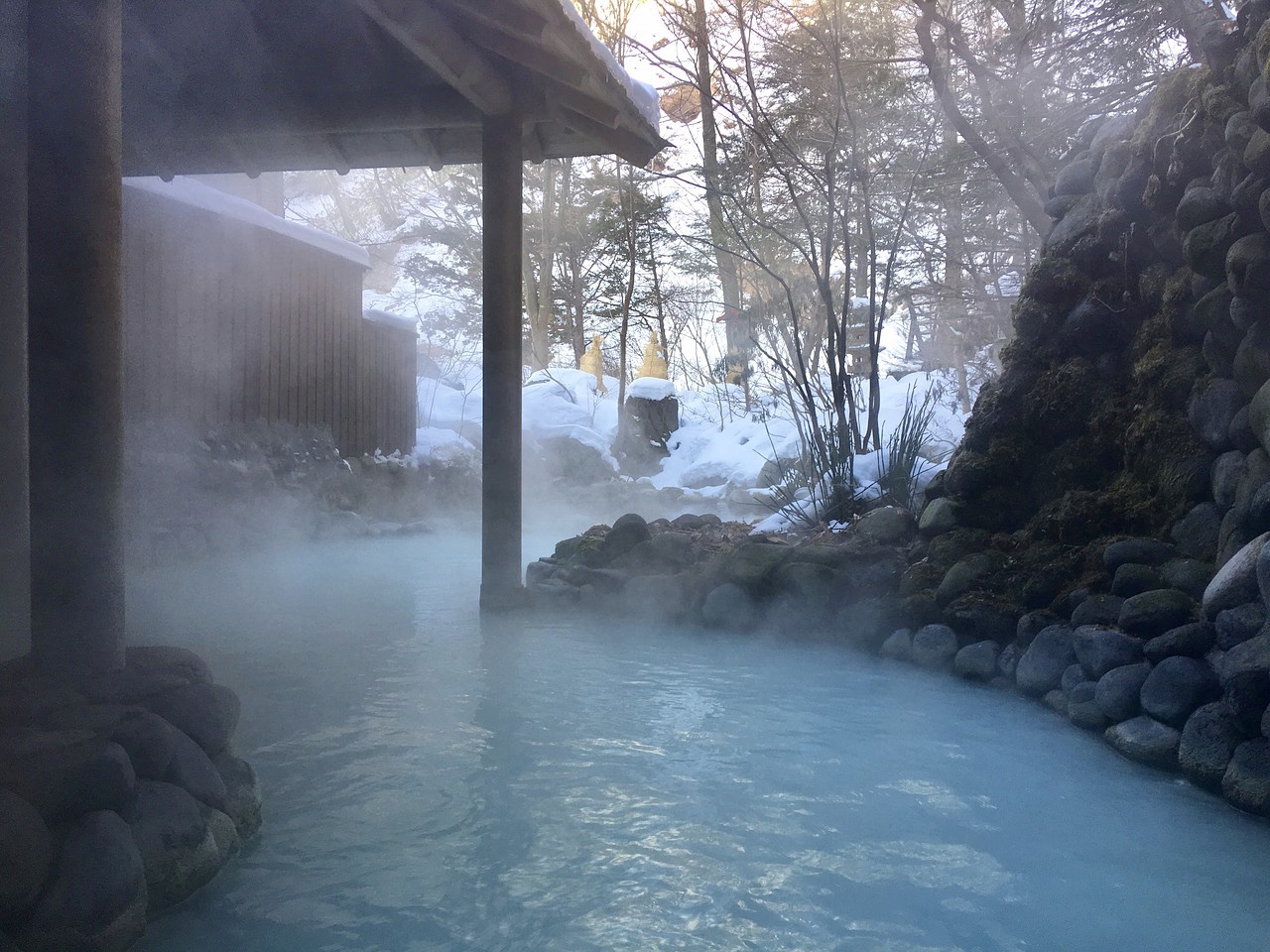
Festivals – Japan LOVES a good celebration (who doesn’t?). The top festivals to try and experience throughout the year would be:-
Yuki Matsuri: A February celebration. Over two million visitors come to Sapporos (Hokkaido’s capital) for the Annual Snow Festival featuring elaborate ice sculptures, which are created specifically for the celebration.
The snow festival has three sites to explore; The Odori , the Susukino and the Tsu Dome. Wrap up warm and enjoy the snow!
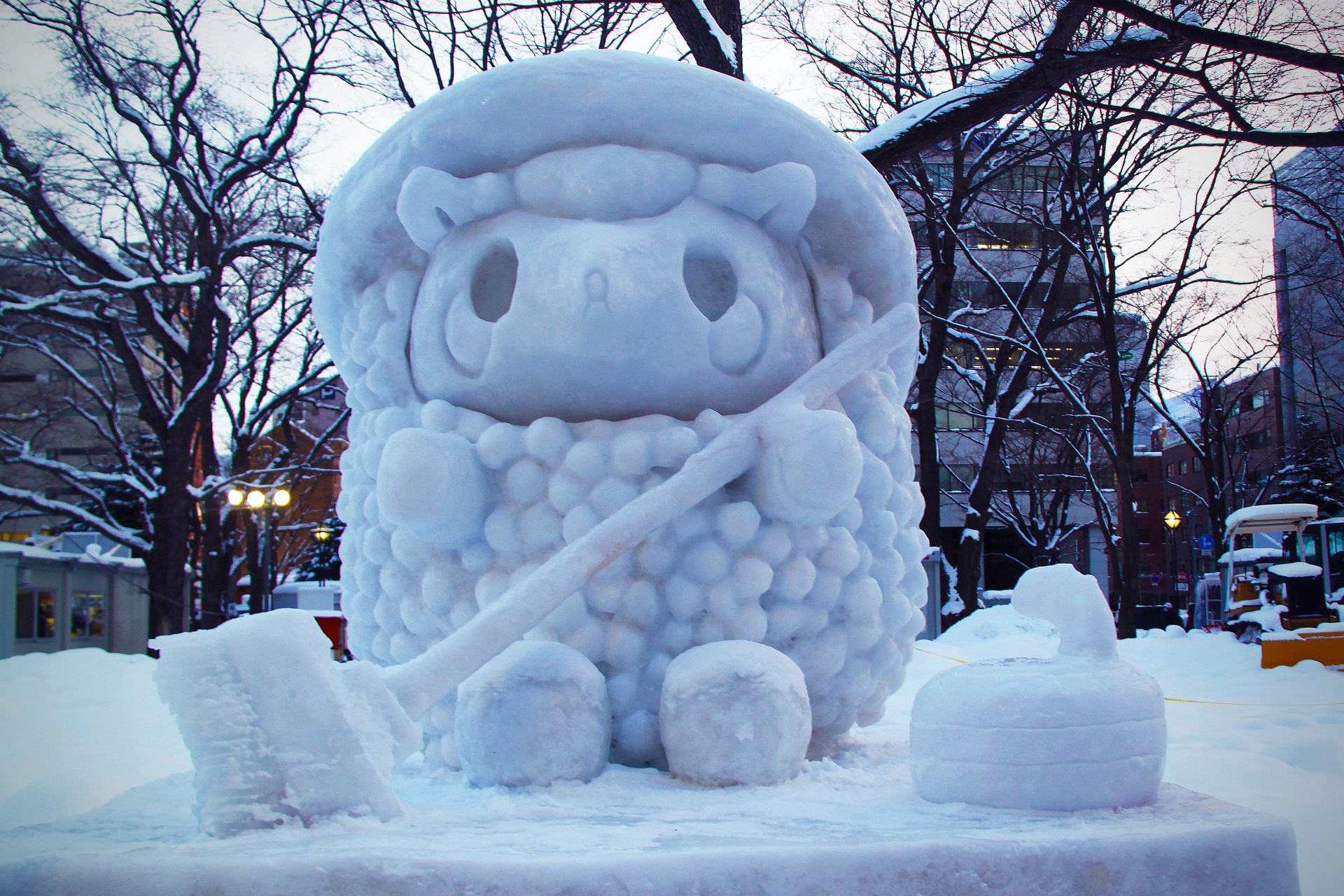
Omizutori: A March celebration. Known as one of the oldest events in Japan. This Buddhist celebration is a sacred water drawing festival, located in Nara. The event features giant torches, which are lit at Nigatsudo Hall and effectively “rain down” embers throughout the duration of the event to purify and bring good luck to all viewers of the ceremony.
After a period of time, 11 Renhyoshu (priests) draw water from the Todaiji Temple well and extinguish the flames.
Hanami: An April celebration. Hanami entwines itself perfectly with the bloom of cherry blossom! (Sakura). This festival celebrates the transient nature of life by seizing the present, because the beauty of life only lasts for a period of time (just like the blossom). People celebrate this festival by enjoying the sights of the blossom blooming and having outdoor parties under the sakura’s boughs. Great spots to catch Sakura would be in parks such as; Goryokaku Fort Park in Hakodate City, Hokkaido, Kakunodate in Akita and two parks in Tokyo, Ueno Park and Shinjuku Gyoen Park.
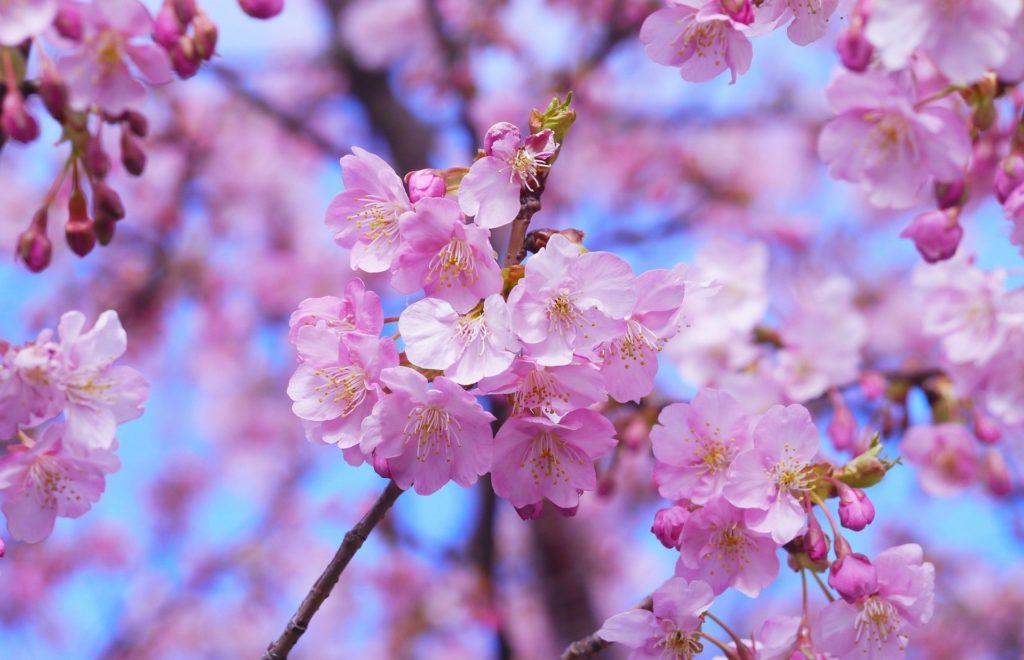
Sanja Matsuri: A May Celebration. Known as one of the wildest and largest festivals in Tokyo. If you plan to visit Japan in this month you should definitely try to experience Sanja Matsuri in all its glory. The festival honours three men who established/founded the Senso-hi Buddhist temple. Their names are; Hinokuma Hamanari, Hinokuma Takenari & Hajino Nakatomo.
Gion Matsuri: A July celebration. This is another very famous festival in Kyoto, the old capital. It’s original usage was to pray for deliverance from plague! However, the festival has now evolved into a big celebration of Kyoto’s culture as well as giving a nod to purification and pacification. It’s like a traditional summer rite/street party rolled into one!
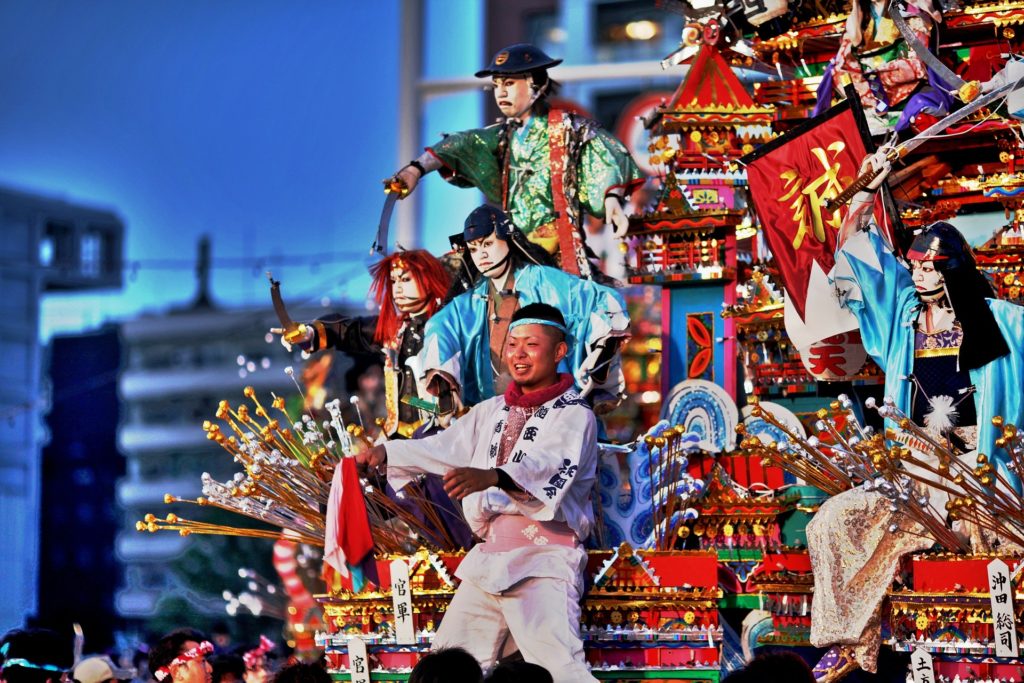
Aomori Nebuta Matsuri: An August celebration. Aomori Nebuta Matsuri features daily parades full of musicians carrying large taiko drums, dancers and massive lantern floats which can take an entire year to create! Most of the floats pay tribute to gods, mythical figures and characters from popular TV series such as NHK Taiga.
Kishiwada Danjiri Matsuri: A September celebration. In a 300 year old tradition, carpenters pay tribute and pray for a successful Autumn Harvest by handcrafting beautiful wooden floats (danjiri) which are then pushed and pulled through the streets whilst the carpenter rides on top in celebration. The celebrations take place around Kishiwada Castle and one to try and catch if you’re around the Osaka area in this month.
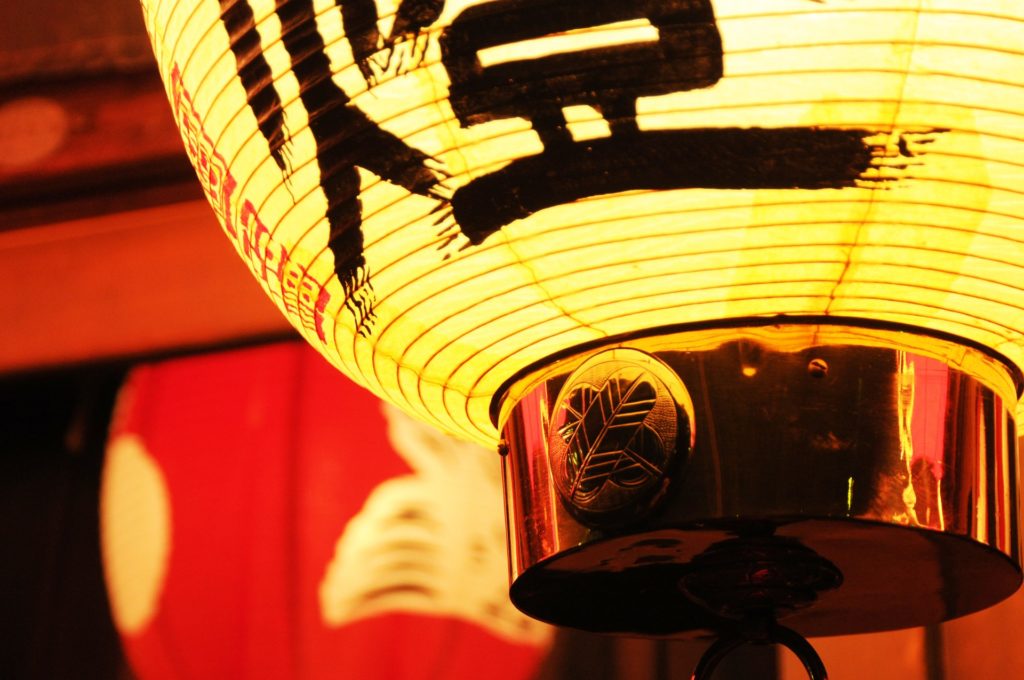
Traditional Japanese Inn (Ryokan) – To truly immerse yourself in the Japanese experience, why not spend a night or two in a Ryokan? This experience takes you back to the roots of living in Japan. For instance, you’ll sleep on futons (quilted mattresses) and tatami floors (woven reed mats) instead of your typical bed. The inns usually have high polished wooden floors throughout. Staff may wear traditional kimonos and be very attentive to your needs and the meals will usually be made from local seasonal ingredients. A true cultural indulgence.
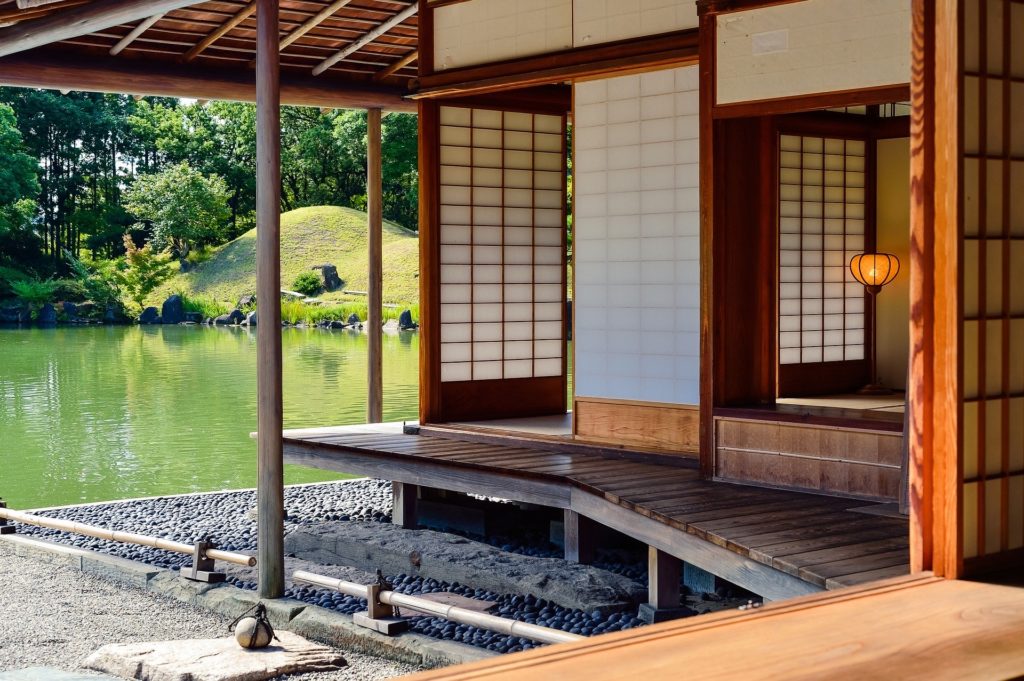
Capsule hotel – This style of hotel is becoming very popular in Japan because it’s a great way for travellers to, cost effectively, explore Japan. It’s an experience in itself! You’ll be provided with; lockers for your belongings, shower facilities and a small “capsule” like space where you can rest up for the night. It’s sort of like a futuristic hostel stay. Worth the experience.
Sumo – Japan’s National sport is Sumo, a traditional wrestling art where purifying salt is lifted up into the air and two sumo wrestlers start their fight by crashing into each-other. The aim is to shove the other person out of the sacred ring. Sumo wrestling is a fantastic sport to witness throughout Japan, with tournaments taking place through the year in Tokyo, Nagoya, Osaka and Fukuoka. If you can’t visit when the tournaments commence, try to catch an early morning practice at the stables, where wrestlers train and live.
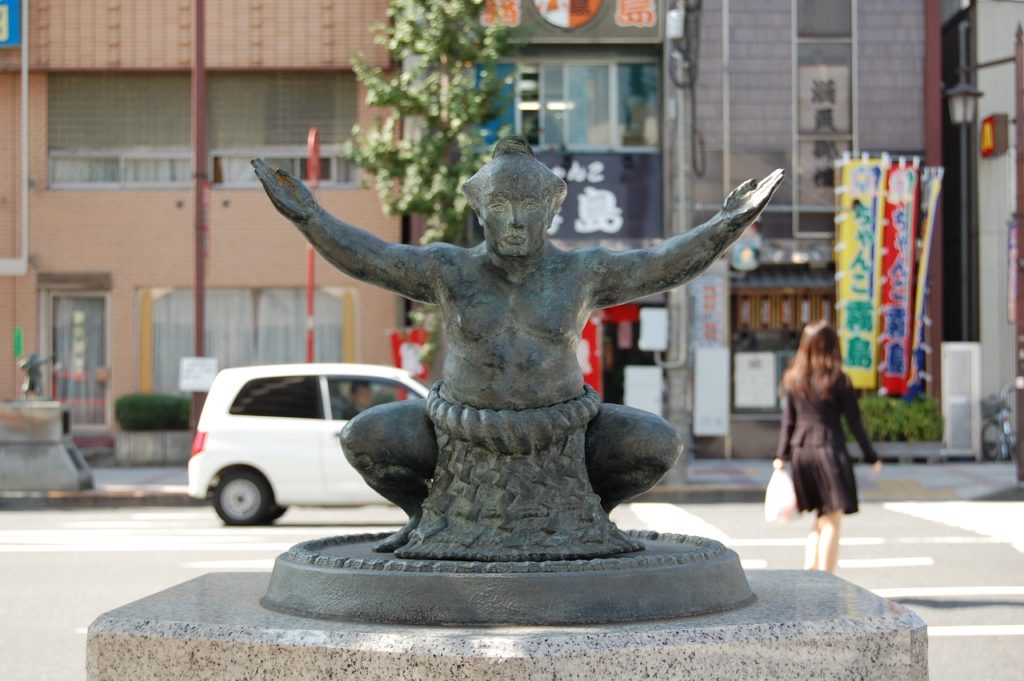
Beaches – The top beaches are usually located in the southern islands of Japan. Particularly Miyako Island, which is part of the Okinawa Prefecture. It is the fourth largest island and is known as a great destination for snorkelling and diving as well as having stunning white sands and turquoise waters.
Be aware, in certain seasons between June – October, poisonous marine life such as the box jellyfish are around so definitely check this before you visit!
Pop Culture – Japan has a rich culture embedded into it’s society. One part of this would be, “pop culture” which refers to; a style of music, karaoke bars, anime, manga, gaming, cosplay and more! There is often a “cute” and or “beautiful” (Kawaii) quality attached to these concepts, ideas & attitudes, and these live within mainstream society. The best place to experience pop culture in Japan would be Tokyo, Japan’s capital.
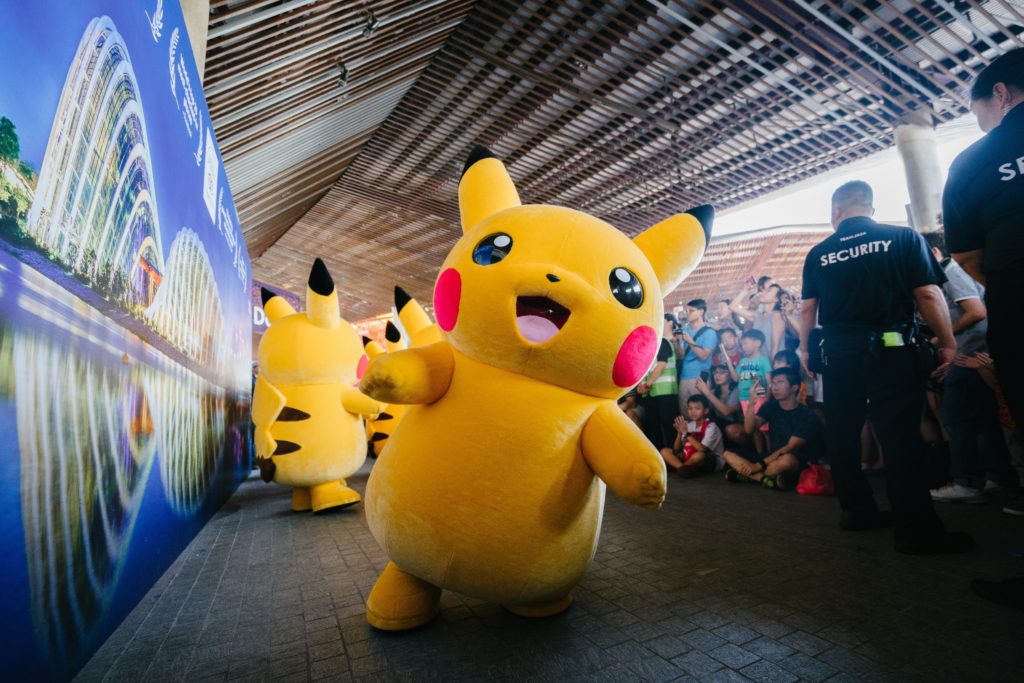
Top tip: Any activity or popular restaurant you would like to try out. Make sure to check if you need to book. Some of the activities in Japan require you to book weeks in advance, and you don’t want to arrive at your day’s activity to find you will be turned away for not booking!
Famous Foods
In Japan, dishes are like a work of art. From the freshest, local ingredients to the end result in the presentation. They take pride in cooking and assembling a dish.
You will usually find that most restaurants will offer a specialised dish, which I would say is the one to try, as it could be their speciality because they have spent generations perfecting it!
Most dishes vary from region to region and a lot are seasonal. So, if you’re lucky enough to visit Japan in different seasons of the year, you may experience completely new tastes.
Kaiseki – This traditional meal is constructed as a multi-course dining experience. Your meal will be presented in small, individual dishes over a period of time. From 6 to 15 dishes, it will truly indulge your senses, but mainly your tastebuds..and your wallet. Kaiseki showcases years of intricate chefs skills and techniques of presentation.
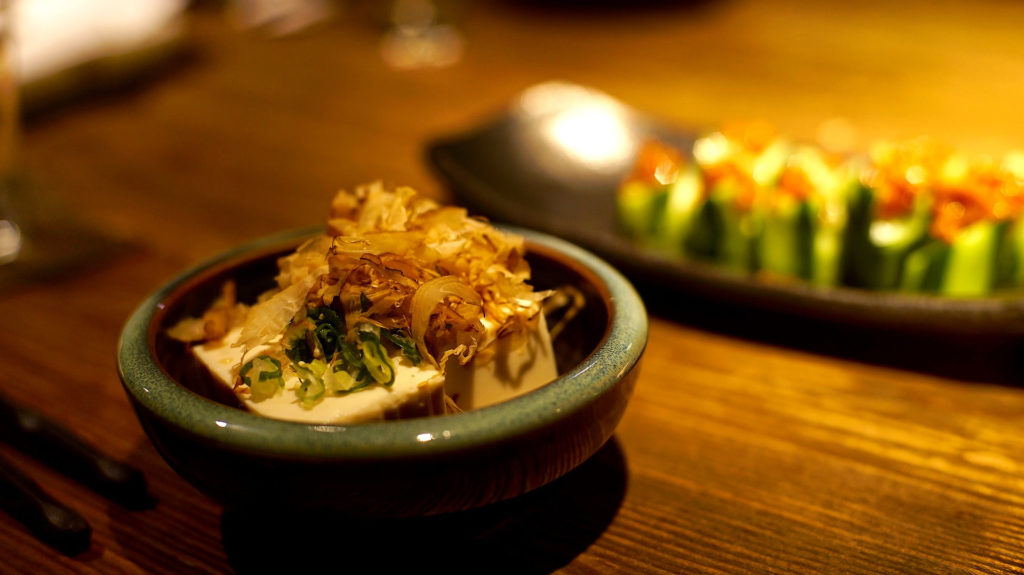
Ramen (pulled noodles) – Ramen is loved all over the world, but this tasty dish originated in Japan! Usually, ramen dishes consist of noodles, meat/fish based broth flavoured with soy sauce or miso and topped off with toppings such as sliced pork, spring onions and even an egg!
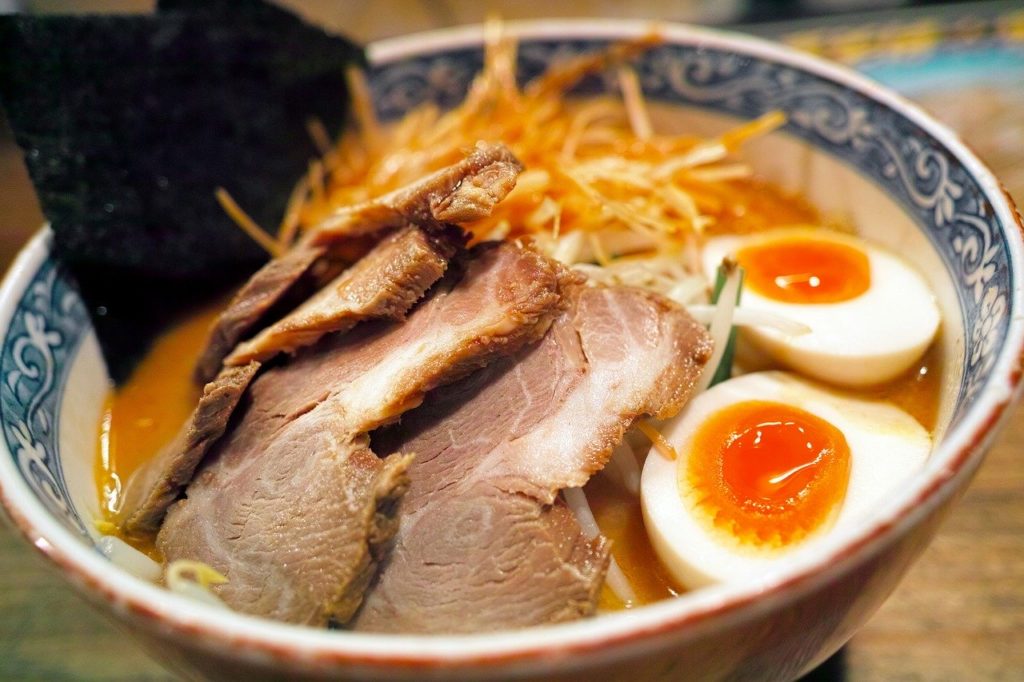
Sushi – Another popular dish that you may have tried before, is Sushi. Sushi normally consists of fish, rice and seaweed. In Japan the ingredients used to prepare these dishes are seasonal, making them incredibly fresh. The sushi you taste in Japan will be of much higher quality, and not as pricey as you would normally pay in your own country!
Top tip: Sashimi is usually raw fish. Sushi usually consists of cooked meat or vegetable with vinegared rice.
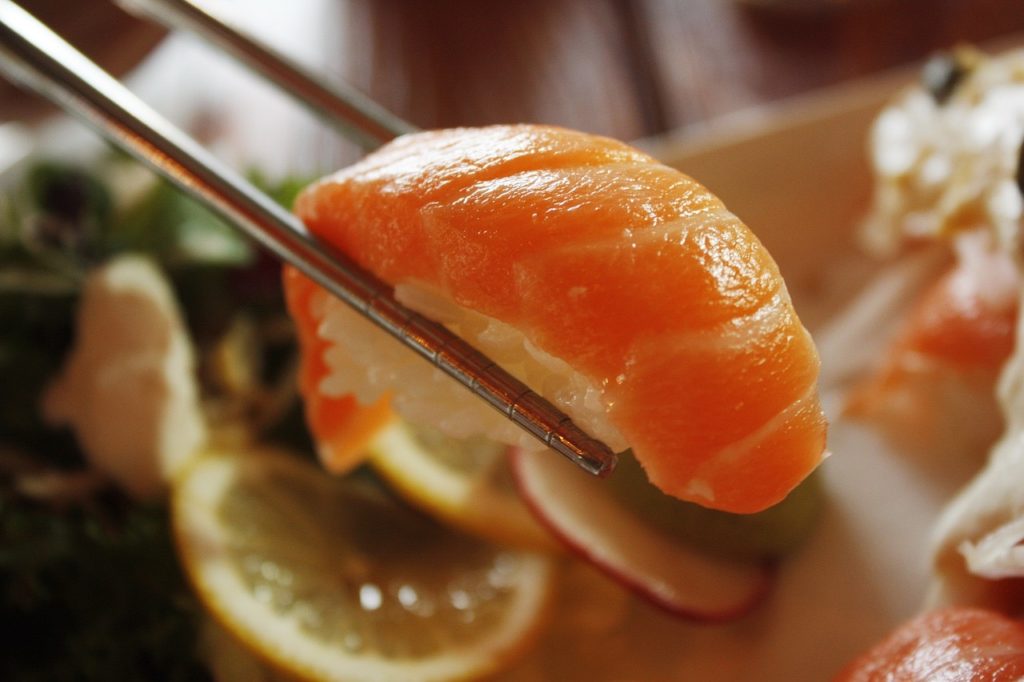
Wagyu (Beef) – Japan is famous for breeding a particular type of cattle which provides some of the best cuts of beef in the world. The most well-known would be Kobe beef. The main reason it is so popular is due to the structural integrity of the meat. The marbling of fat throughout the cut provides a rich buttery flavour and one to try when in Japan!
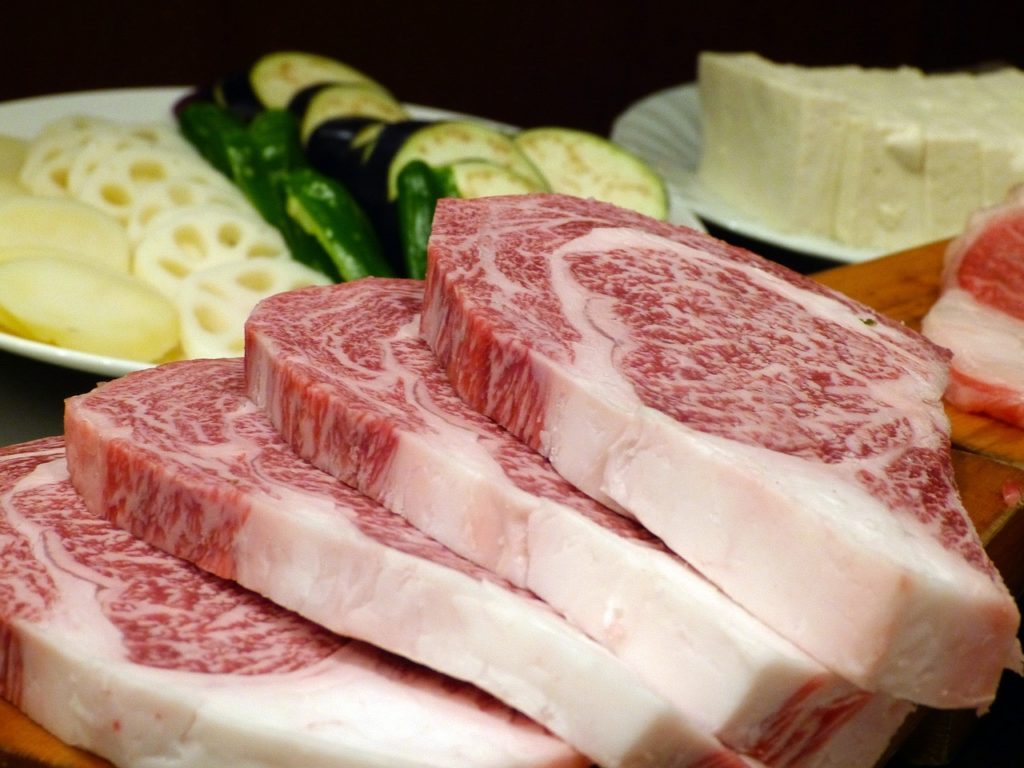
Yakiniku – Japanese style grilled meats which are packed full of flavour because they’re seared to perfection. This is definitely a favourite of mine!
Sake – This alcoholic beverage has been a national favourite in Japan for generations. The precise process of making Sake has been refined through centuries; by fermenting rice, water, koji mold and yeast together. Sake often has a strong 15% alcohol content with flavours ranging from nutty, fruity and flowery. It has a light crisp taste with a delicate aroma to enjoy.
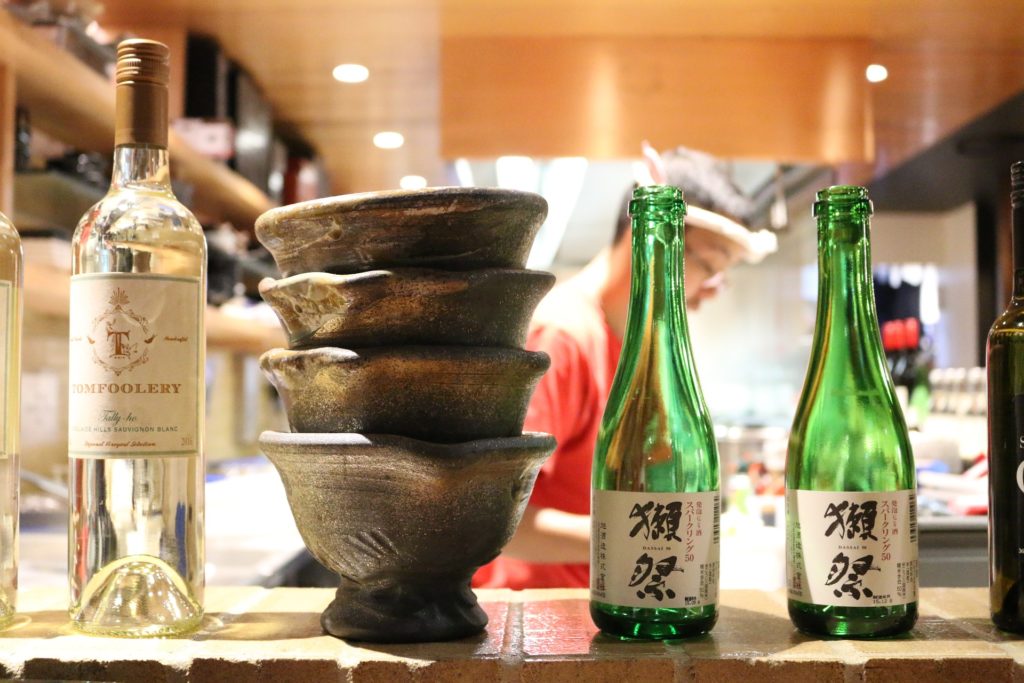
Something you’ll come across in Japan is the Japanese pepper “sansho”, which is green in colour and gives off fragrant notes of lemon; a great addition to any dish.
I think one thing that I can always recommend you do is to “spot the queues”. If there’s local customers willing to wait for a restaurant you can take that as the definitive hint to try that place out!
An added bonus to Japanese dinning is the free water with all meals! This is usually complimentary in every restaurant you visit (the tap water is safe to drink).
Currency, Language & Respect
There’s a few things you should know about Japans culture; the currency used, the language spoken and how to be respectful whilst visiting.
Currency – Japan’s form of currency is “Japanese Yen”(¥). Currently, the exchange rate is around ¥145 to £1.
Japan is still very much a “cash society”. So, if you’re out in restaurants, eating street food, exploring the many tourist attractions etc. Make sure to carry cash with you. Trusted ATMs will be found in stores such as 7eleven or FamilyMart (these convenient stores are pretty much everywhere you go with language settings to English).
Top tip: Bring your passport with you everywhere you go. There’s a “tax free” benefit for tourists whereby, some stores will provide you with a discount if you flash that foreign passport to them! You could get 8% off your final bill or a freebie!
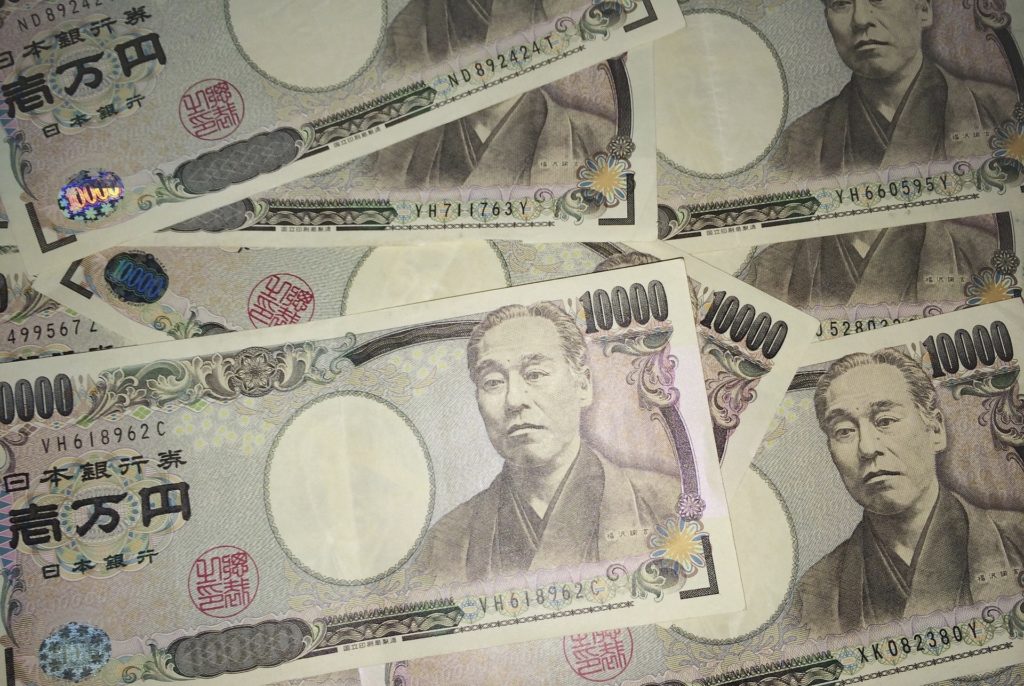
Language – The most commonly spoken language in Japan is…Japanese. Like every country there are usually different dialects depending on where you visit. However, the standard Japanese would be understood throughout.
Whilst in Japan, some will speak English around the main cities. However, in this culture you may find that you are expected to speak their language in their country (and I completely agree with this expectation!).
So my advice? Learn as much as you can before you go. Here are a few helpful phrases to learn. I always find that if you try, you will be respected a lot more because you’ve shown willing.
| English | Japanese |
| Good Morning, Good afternoon, Goodbye | Ohayō gozaimasu / Konnichiwa / Sayōnara |
| Yes/No | Hai / iie |
| Please/Thank you | Sumi-masen / Arigatō |
| Where’s the bathroom? | Toire wa dokodesu ka? |
| 1 – 10 | ichi, ni, san, yon, go, roku, shichi, hachi, kyuu, juu |
| How Much is it? | Ikura-desu ka? |
| What do you recommend? | Osusume wa nan desu ka? |
| Could I have the bill please? | O kanjō onegaishimasu? |
| Sorry, I don’t understand Japanese | Sumimasen, nihongo ga wakarimasen |
Respect – Japanese culture is centred around respect. This can be for privacy, family hierarchy (i.e respect your elders), as well as the level of respect they give to strangers. It encompasses everyday life and whilst exploring Japan, you should do the same.
You may come across some cultural differences whilst in Japan. So, here are some respectful tips/rules to know, before you go!
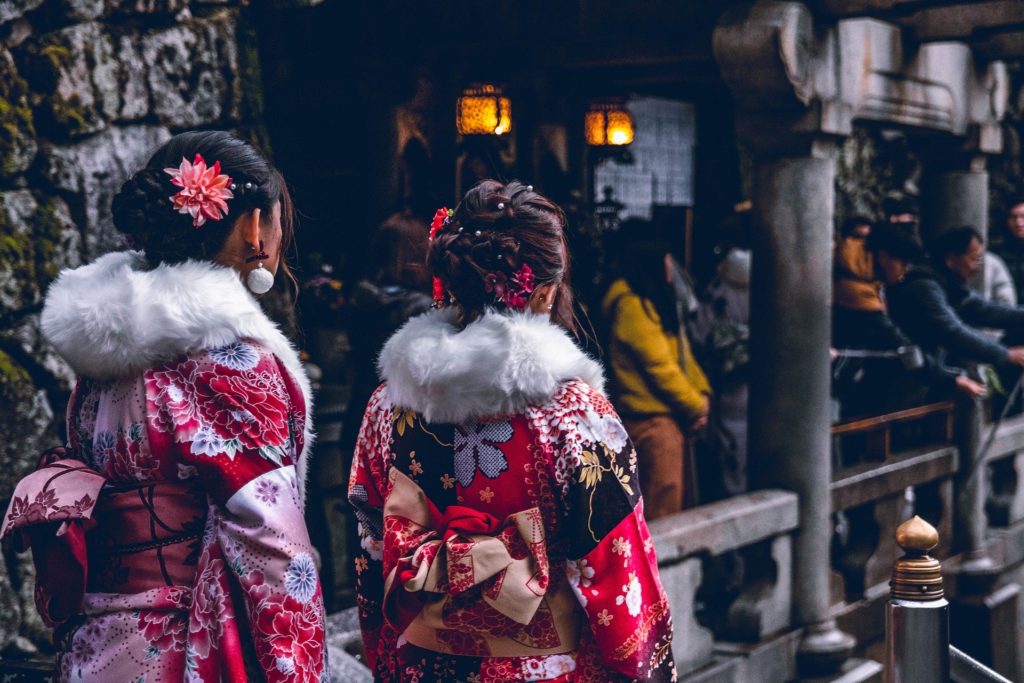
Rules: Rules however small, are not meant to be broken. Japan is a country in which stands by this saying. You may find yourself with a few more dirty looks from the locals if you try to bend them!
To give you a sense of Japan’s discipline, here’s a situation you may come across; when crossing a street, everyone in Japan waits for the light to turn green. Even if there are no cars on the road they will wait, as that is the rule for pedestrians.
Public Areas: A typical mannerism you may notice is; no one will walk, whilst eating or drinking. This is a habit put in place to keep the streets clean from unnecessary rubbish. Most will buy and eat their food in the same place, before discarding it in the closest bin possible. This is why you may struggle finding a bin “on the go”, as they’re usually found right outside the store you bought your food from…makes sense really!
Public Transport: Transportation such as trains, will usually provide “silver seats” for the elderly, pregnant or physically impaired. You can sit in these seats however, if you notice someone with one of the above traits; make sure to give the silver seat to them.
Another trait to note, no phone calls are taken on public transportation as it can come across as rude. Save it for when you’re in your own space.
Dining Etiquette: Let’s talk about chop sticks. There’s a few things to note. Firstly, never roll your chopsticks to try and file wood particles down, it gives off the impression that you think the servers chopsticks are of poor quality/cheap.
Don’t stick your chopsticks upright (vertically) in a bowl of food. This is usually something the locals do when offering food to their ancestors, at funerals. Place your chopsticks to the side or something..just not upright in the air.
On a positive note, there is no need to tip when in Japan. Happy days!
Clothing/shoes: Some standard clothing rules would be to dress modestly, especially for your temple visits. However, the main rule you will come across is to make sure you take your shoes off before entering someone’s home, temple and some buildings. I would advise easy slip on and off shoes for your travels! As you will find out pretty quickly when not to keep your shoes on!
Samurai: Known as a member of the warrior class, these warriors no longer exist. Nevertheless, it’s a rich part of Japanese history and should be known and respected.

Samurai’s would practice a specific code of conduct called, “bushido” (the way of the warrior) and were expected to faithfully serve their lord. If a Samurai disgraced this code, they would have no honour. The typical Samurai armour was made up of instantly recognisable plated armour knit with silken cords and their weapon of choice was the katana sword, a very long curved sword with a single edged blade for combat.
Geisha girls: Geisha is a well known respected traditional form of art, found mainly in Kyoto, Japan’s old capital. “Geisha” translates to “arts person”, they are skilled in entertainment; and are very accomplished musicians/dancers.
Geisha girls will be found wearing the traditional Japanese attire, kimono (the national dress of Japan). Kimonos are several layers of cloth (most likely silk but sometimes cotton in the summer) wrapped around the body and tied up with a sash around the stomach. Ankle high socks and sandals are also worn with this outfit, and to finish off the traditional look? Their faces are painted white, with precise eyeliner and lipstick application with an immaculate hairstyle.

Transportation
One thing you will notice when travelling across this country is how incredibly easy it is to get around. Japan’s public transport is one of the most efficient systems in the world.
Bus – When you reach the airport, I would recommend finding the bus. From Haneda airport to Tokyo city centre it will be approximately ¥1,500 (£12). Also, the “inter-city” bus, costs around ¥1,000, which is a great saver when you’re planning a day of sightseeing.
Bullet Train (shinkansen) – The bullet train runs all the way from Hokkaido (North) down to Kyushu (South). It’s operated by Japan Railways (JR) and can run at a speed of 200mph (that’s a third of the speed of an aeroplane!) these things are known for their punctuality and efficiency.
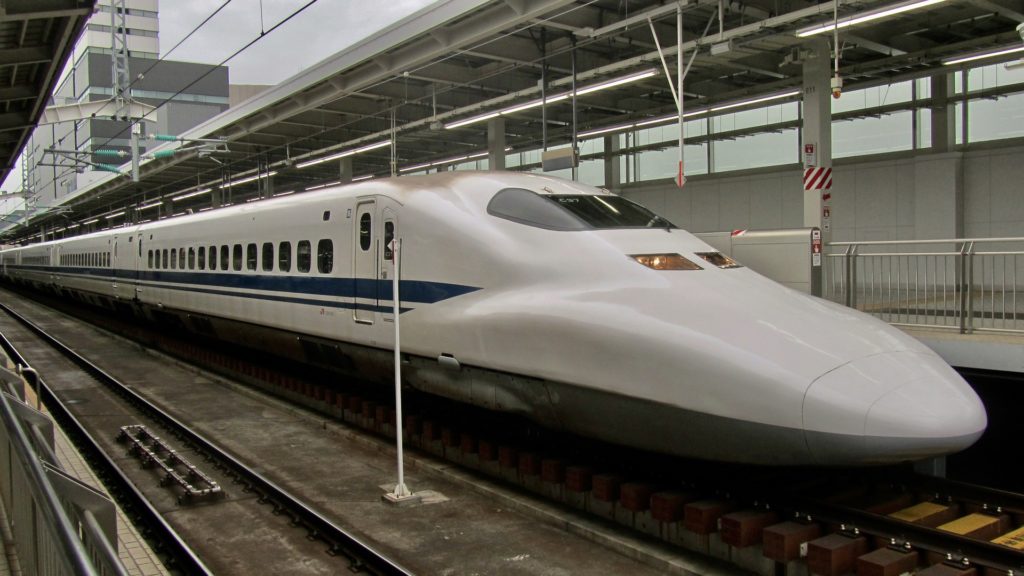
JR Pass (Japan Rail pass) – This discount pass is sold specifically to overseas visitors. The pass is sold by Japan Railways Group and is a very cost effective way of using all major forms of transportation on your journey through Japan.
You can order an ordinary car or a green car (first class) pass through their website, which gives you the option to purchase a 7 day, 14 day or 21 day pass. A week pass could set you back about £220 but in comparison, a typical one-way ticket from Tokyo to Osaka (2hr30mins) could cost around £120. So, I highly recommend you do this before you go as you can sometimes find it’s cheaper online.
Suica – This is a form of rail card which lets you pay for tickets AND convenient food on-the-go when travelling by train. You can also input the data onto the IOS wallet functionality once you’ve obtained the physical card for ease of use when out and about!
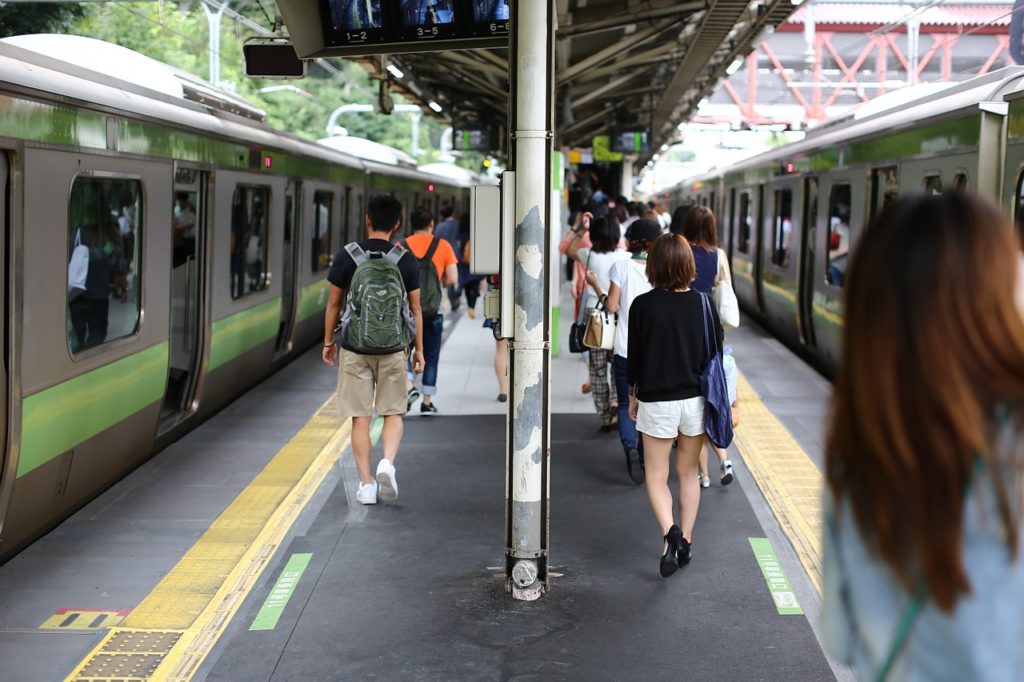
Subway – Most major cities have underground networks that are signposted with English text below the Japanese captions (Just note that you won’t always have this luxury if you want to explore off the beaten track).
Japan Taxi – If in doubt, download the app “JapanTaxi” it’s like Uber but in Japan. It can be safer and you’ll know you won’t get scammed.
Airport – Japan has many airports across its country. It’s best to research which is closest to your first accommodation. Haneda Airport and Narita Airport are the most commonly known airports as they are closest to Japan’s Capital, Tokyo.
Top tip: If you’re flying from Japan (Tokyo), try booking yourself a seat on the right hand side of the aircraft, you may catch a beautiful last glimpse of Mount Fuji before you jet off to your next adventure or home.
Medical & Extras
Injections – As always, check with your doctor. Make an appointment, and know what cities you will be travelling to in Japan. They will then advise you on what injections you should have before travelling to this country. Recommendations might include, Hepatitis A & B, Typhoid, Tetanus, Diphtheria, Japanese Encephalitis, Cholera (which is usually in a form of a drink) and Rabies.
First Aid Kit – Always pack a first aid kit for travelling. As you never know what might happen on your travels, it’s best to be prepared and understand what risks can come with the activities you’re planning.
Be warned, some countries have different regulations on medication and whether or not, you are allowed to bring them into the country.
Specifically, in Japan, prescriptions/over-the-counter, which are classed as an “anti-stimulant drug” (e.g a typical Vicks inhaler, cold & flu tablets/powder sachets), anything containing pseudoephedrine and or codeine is not allowed. Definitely make sure you check the status of your medication to understand what you can bring with you (Any permitted medication, should be noted with a letter from your doctor stating it is prescribed).
I would also advise you to pack anti-bacterial hand gel. It’ll be your new best friend, no matter what country you visit.

Visa & Passport – Japan offers a 90 day visa for tourists so you won’t need to apply for one before you land if it’s within the allowance. They will provide you with the visa when you arrive at the airport (but always check this for your country).
Travel Insurance – Better to have it and not need it, than not have it and unfortunately end up needing it.
Bug Spray– These aren’t your typical European bugs. Pack heavy duty bug spray with a 50+ DEET level, you’ll need it. Also, a great tip you might not know about is trusty Q10 vitamins. Take them a week before you fly and then daily while on your travels. When it’s in your system, it will send off a scent that repels those pesky bugs!
Sun-cream & After-sun– This is obvious. However, some people do need the absolute basics written down in black and white! Try to buy suncreams with bug repellent, it’s a great multi-purpose hack.
Electricity – Travel adapters, the best ones would include multi-pin functionality with multi USB ports! In Japan the pin resembles the North American style. They’re a parallel flat two-pin shape, classed as a “Type A” plug & socket. They also have a very low voltage supply of 100V.
Bathroom – Depending on where you go in Japan, you may find; futuristic toilets which have heated seats, play you music and wash your “area” with a gentle yet powerful spray of water after use…or you may get the more traditional toilet, like most Asian toilets, these are closer to the floor for you to squat over.
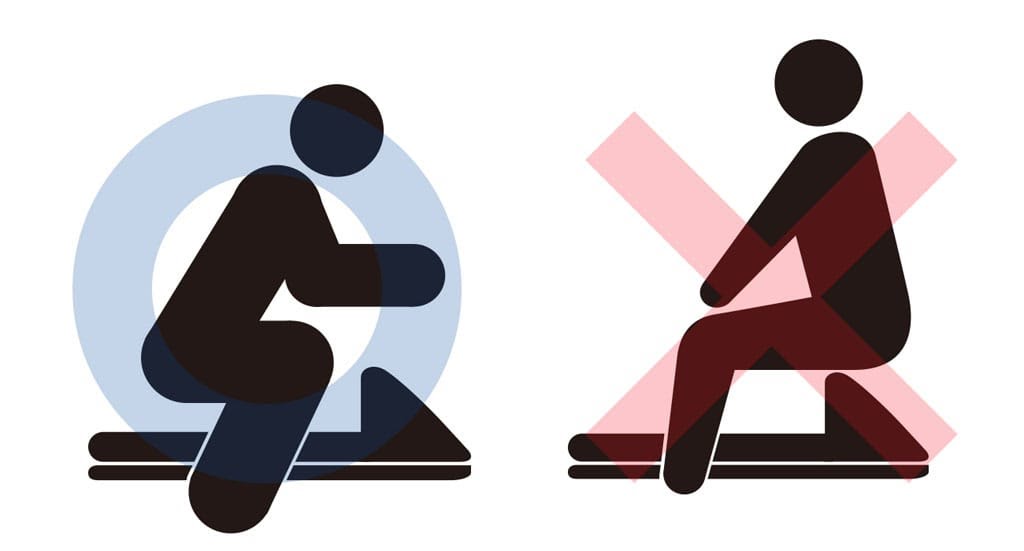
However, no matter what toilet you find yourself in, the kanji characters to indicate a male or female bathroom should be noted. You don’t want to be walking into the wrong bathroom!
| Japanese Kanji Characters | 男 (Otoko) Male | 女 (Onna) Female |
To me, the female character looks like someone who’s “strutting their stuff” down a catwalk… It helps me remember! But…nevertheless, above are the characters for you to note down in which ever way you find is easiest to memorise.
Internet – Free WIFI can be found in many big cities, some restaurants and hotels. So, look out for these spots and grab them while you can! But be aware that WIFI isn’t readily available everywhere. I would recommend (for those of you spending more than a couple of weeks in this country) that you buy yourself a Japanese SIM card to have data available as and when you need it.
Smoking – This is still quite common in Japan with (sometimes) no separation of smoking areas so just be aware and ask to move seats if the smoke is too strong.
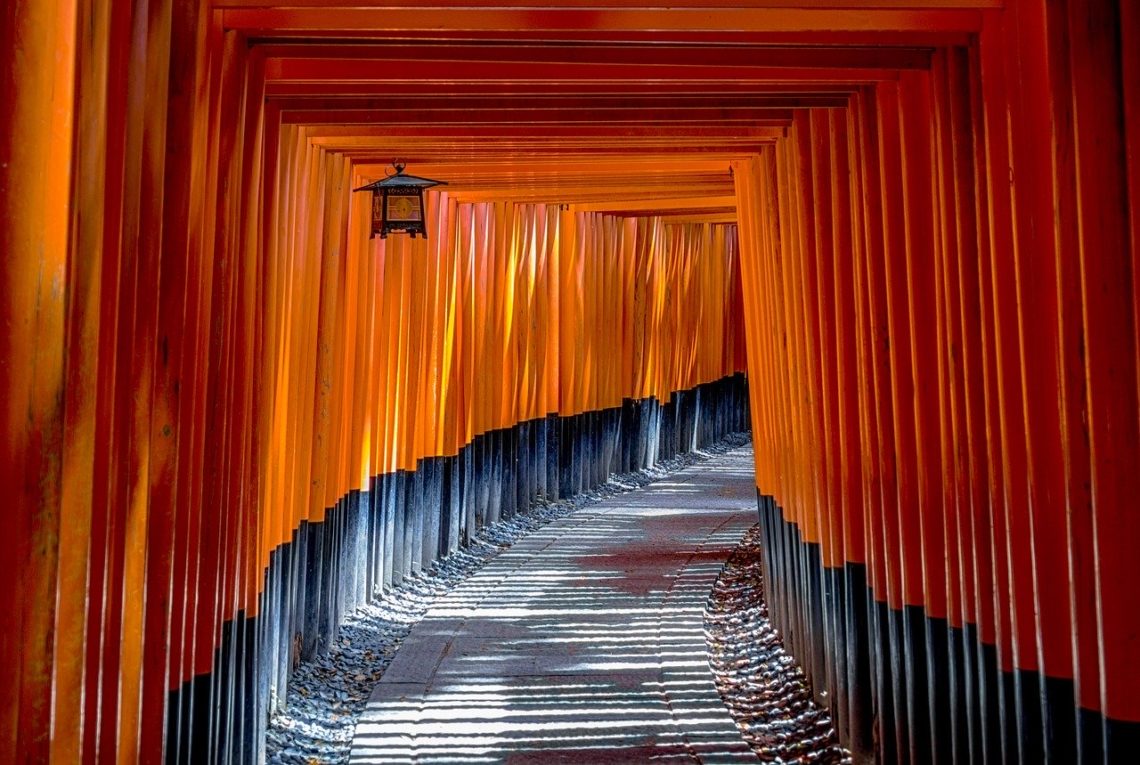

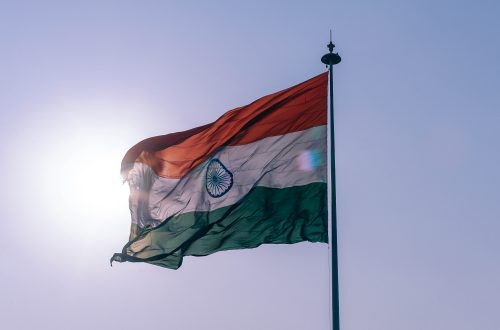
13 Comments
Alia
Hey, thanks for the article post. Really looking forward to read more. Keep writing. Alia
Emmeline B McKee
Wow, fantastic weblog structure! How long have you ever been running a blog for? you make blogging glance easy. The entire glance of your website is excellent, let alone the content!
@juliettekemp
Aw thank you so much! Glad you like the design 🙂 I tried to think of what I would appreciate when using a website and then provide that to my readers!
Steve Akula
Good day! I just want to give you a huge thumbs up for the great info you have got here on this post. I am coming back to your blog for more soon.
@juliettekemp
That’s great to hear! Thanks for your comment 🙂
Roanna
Hello. This post was really interesting, especially since I was searching for thoughts on this matter last Wednesday.
Brena Standley
Major thanks for the article. Really looking forward to read more. Much obliged.
@juliettekemp
Thank you! Should have a new one out very soon. Keep those eyes peeled!
Clementina Stearne
Pretty! This was a really wonderful article. Thanks for providing this information.
Verile Normy Ohare
Thanks for the blog article. Really thank you! Want more.
@juliettekemp
No worries! More to come 🙂
Shannah Dominick Goff
Appreciate you sharing, great article. Much thanks again. Keep writing. Shannah Dominick Goff
Tandie Josiah Marwin
This blog site has got lots of very helpful information on it! Thanks for sharing it with me. Tandie Josiah Marwin